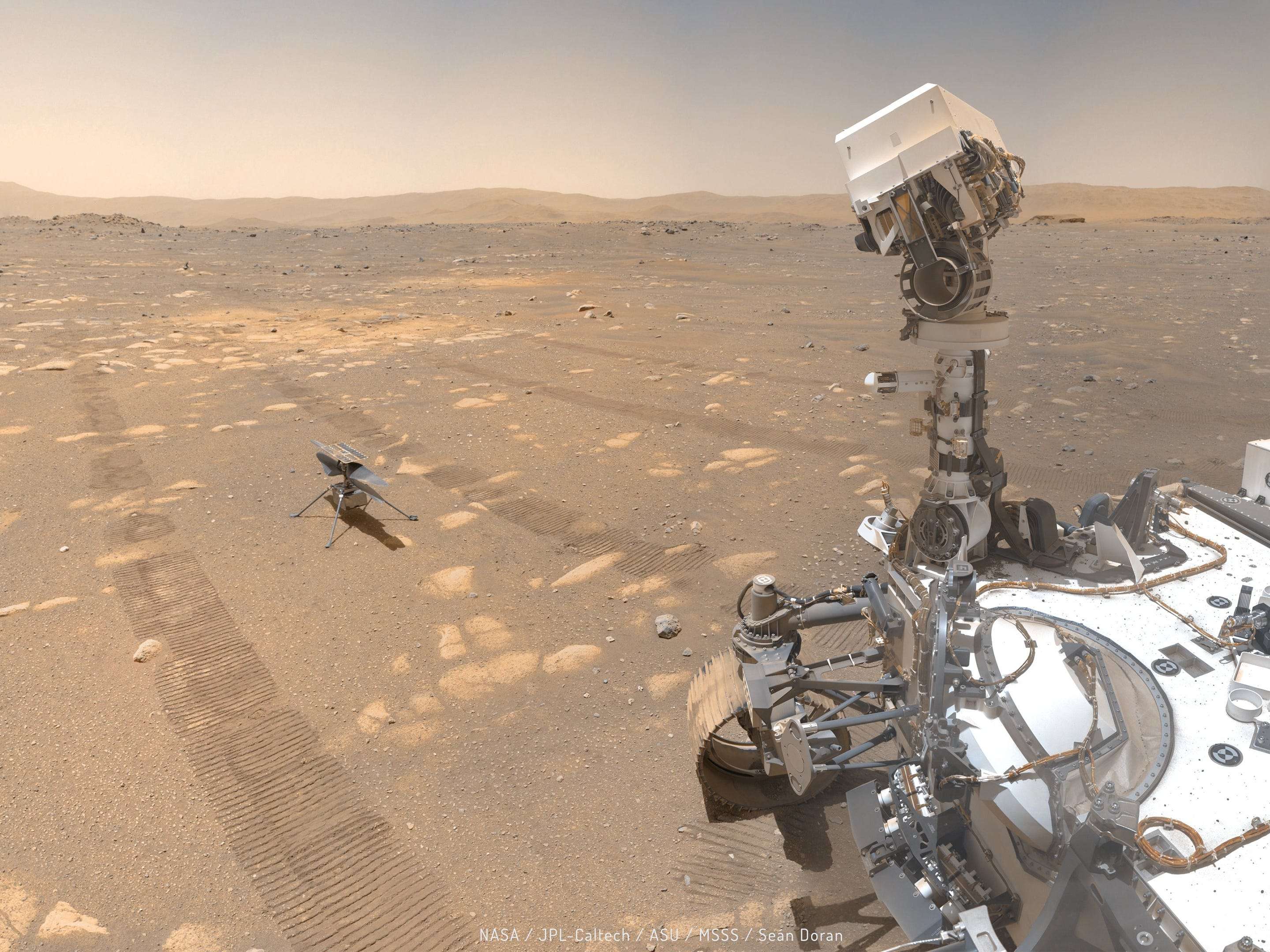NASA's Perseverance rover just turned CO2 into oxygen. The technology could help astronauts breathe on Mars.
NASA sent the Perseverance rover to Mars with some bonus technology: a device that can turn carbon dioxide into oxygen, much as trees do on Earth.
The device, called the Mars Oxygen In-Situ Resource Utilization Experiment, or MOXIE, pulled carbon dioxide from the Martian atmosphere to produce its first oxygen on Tuesday. It’s a small amount – 5.4 grams, enough to keep an astronaut healthy for 10 minutes – but it’s proof the technology works on the red planet. That’s good news for the prospect of sending human explorers to Mars. Oxygen takes up a lot of room on a spacecraft, and it’s unlikely that astronauts will be able to bring enough with them to Mars. So they’ll need to produce their own oxygen from the Martian atmosphere, both for breathing and for fueling rockets to return to Earth.Advertisement

“This is a critical first step at converting carbon dioxide to oxygen on Mars,” Jim Reuter, the associate administrator for NASA’s Space Technology Mission Directorate, said in a Wednesday press release.
“MOXIE has more work to do, but the results from this technology demonstration are full of promise as we move toward our goal of one day seeing humans on Mars,” he added. “Oxygen isn’t just the stuff we breathe. Rocket propellant depends on oxygen, and future explorers will depend on producing propellant on Mars to make the trip home.” The golden box holding the experiment is about the size of a car battery – just 1% the size of the device scientists actually hope to send to Mars.Advertisement
MOXIE descendants could ultimately produce enough oxygen – roughly 25 metric tons – to launch four astronauts off the Martian surface. Producing that oxygen on-site would save a lot of space, weight, fuel, and money for the initial journey to Mars.
How MOXIE pulls oxygen out of thin air

This isn’t the Perseverance mission’s only technological first this week. Another experiment it carried to Mars, the Ingenuity helicopter, made history Monday when it flew above the Martian surface for the first time. “Tech demonstrations are a really, really critical element of our portfolio,” Thomas Zurbuchen, an associate administrator at NASA, told Insider ahead of Ingenuity’s flight. “They basically enable new tools in our toolbox.”Advertisement

NASA expects MOXIE to extract oxygen from the Martian atmosphere at least nine more times over the next two years. This first attempt was designed to make sure the experiment was working. Future runs will test MOXIE’s abilities at different times of day and across Mars’ seasons. The device is designed to generate up to 10 grams of oxygen an hour.
At the very least, MOXIE won’t run out of fuel for these tests. Mars’ atmosphere is 96% carbon dioxide. The device uses heat and electrical currents to split those CO2 molecules into oxygen (O) and carbon monoxide (CO). Oxygen atoms don’t like to be alone for long, so they quickly combine into O2 molecules – the oxygen that we breathe. The final product should be almost pure molecular oxygen: about 99.6% O2.Advertisement
MOXIE then releases both the oxygen and the carbon monoxide back into the planet’s atmosphere. Future scaled-up devices, however, would store the oxygen in tanks for later use.

Converting carbon dioxide to oxygen isn’t the only way future astronauts could live off the Martian land. Scientists and engineers have also proposed using on-site rocks to build structures or even digging up Martian or lunar ice to make drinking water or rocket fuel. Regardless of which method it chooses, NASA will have to get resourceful to expand human presence into deep space. MOXIE’s success puts one more technology in its toolbox.
This article appeared on the Business Insider India website at https://www.businessinsider.in/science/news/nasas-perseverance-rover-just-turned-co2-into-oxygen-the-technology-could-help-future-astronauts-breathe-on-mars-/articleshow/82189755.cms
]]>